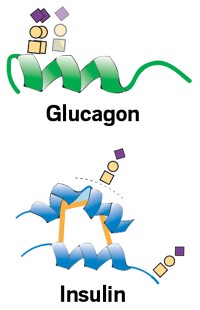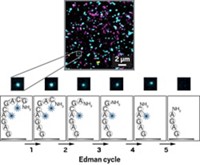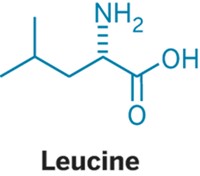Advertisement
Grab your lab coat. Let's get started
Welcome!
Welcome!
Create an account below to get 6 C&EN articles per month, receive newsletters and more - all free.
It seems this is your first time logging in online. Please enter the following information to continue.
As an ACS member you automatically get access to this site. All we need is few more details to create your reading experience.
Not you? Sign in with a different account.
Not you? Sign in with a different account.
ERROR 1
ERROR 1
ERROR 2
ERROR 2
ERROR 2
ERROR 2
ERROR 2
Password and Confirm password must match.
If you have an ACS member number, please enter it here so we can link this account to your membership. (optional)
ERROR 2
ACS values your privacy. By submitting your information, you are gaining access to C&EN and subscribing to our weekly newsletter. We use the information you provide to make your reading experience better, and we will never sell your data to third party members.
Biological Chemistry
Seeking the D Isomer
Sensitive, downscaled techniques locate D-amino acids in single neurons and subcellular sites
by A. Maureen Rouhi
September 26, 2005
| A version of this story appeared in
Volume 83, Issue 39
ACS Meeting News
Life is based on L-amino acids, but D-amino acids can complicate the picture. For example, the nervous systems of certain animals contain D-aspartate. At a certain stage of human development, up to 50% of aspartate in some brain regions is the d form.
Chemistry professor Jonathan V. Sweedler, at the University of Illinois, Urbana-Champaign, wants to know what D-amino acids do. Are they signaling molecules like their L counterparts? Before their roles can be discerned, though, the D-amino acids must first be found. At the American Chemical Society national meeting last month in Washington, D.C., Sweedler explained how his group looks for D-amino acids and peptides containing them. He spoke at a session organized by the Division of Analytical Chemistry.

In the brain, only some of the 1012 neurons use D-aspartate, and what is in those neurons cannot readily be discerned by examining brain tissue because of the dilution effect, Sweedler said. But in cells that use it, D-aspartate could be present in micromolar to millimolar levels. Using chiral capillary electrophoresis with laser-induced fluorescence detection-scaled to cellular and subcellular volumes-Sweedler's group has found d-aspartate in neurons of the sea slug Aplysia californica and has experimented with single cells to establish how it is made, degraded, and released.
"There are no commercial ways of looking at the distributions of D-aspartate and quantitatively measuring levels the way we do," Sweedler told C&EN.
Radiolabeling experiments establish that d-aspartate is made from L-aspartate, Sweedler said. Certain Aplysia neurons can take d-aspartate from cell growth media, collect it in their cell bodies, and transport it to the end of neuronal processes-the cell extensions that neurons use to communicate. These observations suggest that d-aspartate is a signaling molecule, just like L-aspartate.
Some Aplysia neurons use both D- and L-aspartate. "We're trying to understand the signaling roles and how distinct the systems are," Sweedler said. The next step is to characterize the electrophysiology of the neuron when either enantiomer is released. Another goal is to delineate how much of the electrophysiological response is due to each enantiomer. "We now know a lot about D-aspartate in Aplysia, and we want to validate what we found in mammals."
Sweedler also talked about the systematic hunt for neuropeptides incorporating D-amino acids. Such molecules have long been known to exist in bacteria, and many have been discovered in higher organisms in the past 10 years, he said.
What drives Sweedler to find these unusual species methodically is the following scenario: Suppose a neuropeptide has been sequenced and all its posttranslational modifications are known. In theory, that peptide can be synthesized, and the synthetic product should have the same activity as the natural product. If one assumes that the sequence comprises only L-amino acids, but the natural product actually incorporates at least one D-amino acid, then the synthetic product may be inactive.
Sweedler noted that most D-amino-acid-containing neuropeptides are discovered in this way-by accident-when a synthetic product fails to reproduce the known bioactivity of the natural product.
"Our goal is to discover them even without a bioassay," Sweedler said. An analytical method not only will allow rapid survey of such peptides but also will direct researchers to peptides well worth testing for bioactivity.
It requires much energy to take an assembled peptide and flip the configuration of one amino acid. Sweedler suspects that cells invest in this conversion for a reason. "So if we discover new D-amino-acid-containing peptides, we should really make sure that we or others test them for bioactivity."
The technique developed by the Sweedler group involves digesting samples with an N-terminal peptidase, an enzyme that cleaves amino acids from the N-terminal end of peptides. This enzyme will eventually chew a peptide consisting of all L-amino acids into its component residues. If the sequence includes a D-amino acid, however, the enzyme chokes, and cleavage stops one amino acid before the offending residue.
The method works well when the aberrant residue is relatively large, such as threonine. When it is small, such as alanine, the enzyme only slows down, but the extent of slowing is large enough to indicate that a D-amino acid is present, Sweedler said. With this technique, it is now possible to survey D-amino-acid-containing neuropeptides and to investigate what they do.
The switching of amino acid configuration in living organisms has "not really been appreciated," Sweedler remarked. "Most people think life is L-L-amino acids, that is. 'Life is L' now has a lot of exceptions."






Join the conversation
Contact the reporter
Submit a Letter to the Editor for publication
Engage with us on Twitter